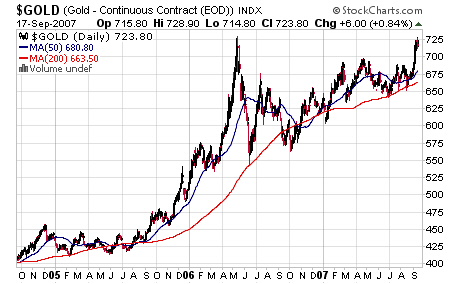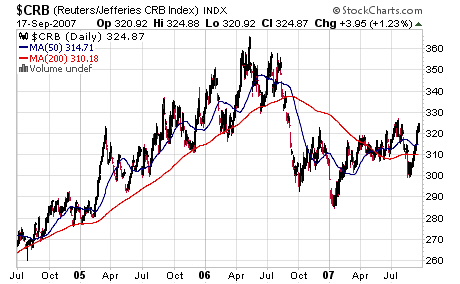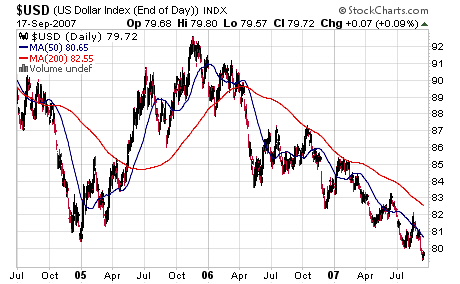
Why we Americans ever abdicated our financial freedom to a group of 12 unelected individuals who sit on the Federal Open Market Committee, is beyond me. That being said, we are stuck with a system that allows an unaccountable and unconstitutional institution dictate the appropriate level of interest rates instead of the free market. Our founding fathers made it clear that they wanted money to consist of only gold and silver. They did this so as to guarantee that the money supply had intrinsic value and would be limited in nature. This would also allow bank interest rates to be a function of savings vs. demand, not a matter of decree. Because of the above situation, we have been forced to endure a dizzying ride of interest rate gyrations that have created severe imbalances in our economy.
The market has now priced in the end of the Fed's interest rate slashing campaign that began in the summer of 2007. The prices of most commodities have contracted and the US dollar has staged a minor rebound, anticipating the conclusion of this cycle. The question is, will the downward pressure in commodities continue and should investors expect the end of this interest rate toboggan ride?
To help The following charts show the performance of gold, the CRB index and the Dollar index (DXY) during the period of June 29th 2004 thru September 17th 2007. This is the period of time when the Federal Funds rate began rising from 1-5.25%, and the date when the Fed started this current easing cycle.
Gold:
CRB Index:
US Dollar Index:
We can see from the charts above that despite the Fed's actions, gold and commodities appreciated in price while the US. Dollar continued in its secular bear market. The reason for these counterintuitive movements is that even at 5.25%, the Fed was still very accommodative in its monetary stance.
Assuming the Fed cuts again today, this recent round of rate cuts will have taken us all the way back to 2%, which is a historically low and highly inflationary level. Fed officials would have us believe that they can take rates higher soon to combat the inflation already present in the economy, but how can anyone take them seriously when the consumer and the economy have become even more leveraged since the Fed caved into saving the housing and stock markets just last summer? Can we really have any confidence in an institution that took rates from 1% to 5.25%, then back to 2% and now wants to move back up again, all in the space of a few years? This is the type of roller coaster action you get when you let a small group of individuals decide the cost of money instead of the market.
Surely, the fate of commodities can be expected to be heavily influenced by the direction of the U.S. dollar. Despite any counter-rally, however, the secular bear market in the dollar should continue because all the factors that lead to a falling currency remain in place--trenchant interest rate differentials, a $700 billion a year trade deficit, a record $9.44 trillion dollar fiscal deficit and a comparatively weak GDP growth rate. Given our recent history and the current state of the economy, gold and commodities should have little to fear.
Michael Pento is a Senior Market Strategist with Delta Global Advisors and a contributor to Green Faucet.


